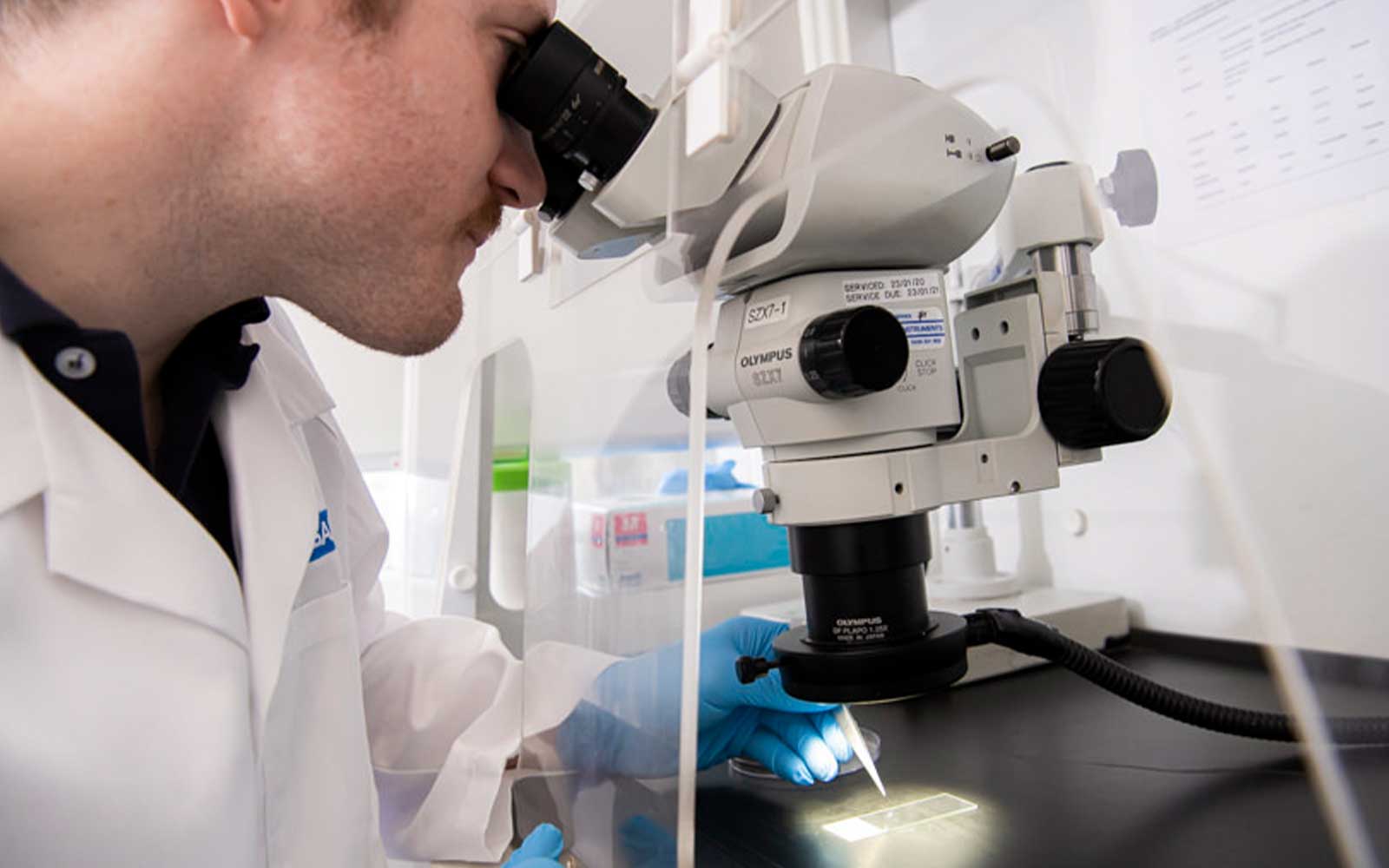The Full Process of Accredited Asbestos Evaluating to Make Sure Residential Or Commercial Property Conformity
In the world of building monitoring and conformity, the procedure of recognized asbestos testing stands as an important element to ensure the safety and health of owners. From the first assessment to the final interpretation of outcomes, each stage plays an important role in establishing the visibility of asbestos within a residential property.
Accredited Asbestos Screening: First Assessment
In performing the initial assessment for certified asbestos testing, a thorough assessment of the home's materials is critical to precisely identify possible asbestos-containing products. This essential action includes visually checking all areas of the building, consisting of ceilings, walls, floor covering, insulation, and other structure materials that might harbor asbestos. Unique attention is offered to materials that are vulnerable to damage or disruption, as these situations can launch hazardous asbestos fibers right into the air. Additionally, tasting of thought products may be needed to confirm the presence of asbestos via laboratory evaluation.
Certified asbestos assessors comply with rigorous procedures established by regulatory bodies to make sure the accuracy and integrity of the screening process. By carefully recording searchings for and making use of advanced screening methods, assessors can give homeowner with a detailed record detailing the presence of asbestos, if any type of, and the suggested actions for reduction or elimination. This first assessment sets the foundation for subsequent actions to resolve asbestos issues and guarantee the security and conformity of the building.
Example Collection Treatments for Asbestos Examining
Effective sample collection treatments are important in making certain exact asbestos screening results and conformity with governing requirements. When gathering samples for asbestos testing, it is crucial to adhere to rigorous procedures to reduce the risk of contamination and ensure the integrity of the outcomes.
Firstly, it is very important to recognize the believed asbestos-containing materials (ACMs) and prioritize tasting locations based on factors such as the product's condition, access, and possibility for disturbance. Asbestos Testing. Samples need to be gathered from various areas within the residential property to provide a comprehensive assessment of asbestos existence
During sample collection, licensed experts need to use appropriate individual protective tools (PPE) to protect versus asbestos exposure. They must make use of clean devices, such as disposable handwear covers and plastic bed linen, to avoid cross-contamination between samples. Samples must be carefully accumulated using a defined technique, such as damp cleaning or coring, and safely secured in airtight containers to maintain their integrity throughout transportation to the lab for evaluation.
Lab Evaluation Process for Asbestos Samples
Upon conclusion of the example collection procedure, the asbestos examples are meticulously carried to recognized research laboratories for meticulous analysis. The first step in the lab analysis process is sample preparation, where the gathered examples are carefully processed to draw out the asbestos fibers.

Once the analysis is complete, a comprehensive report is produced, describing the findings and verifying whether asbestos is present, the sort of asbestos fibers determined, and the concentration levels. This information is essential for home owners to take the required steps to guarantee compliance with asbestos laws and secure the health and wellness of residents.

Reporting and Interpretation of Asbestos Test Results
Certified asbestos testing labs offer thorough records that supply critical understandings right into the existence, type, and focus levels of asbestos fibers discovered in examples gathered from residential properties. These records are essential for residential or commercial property proprietors and supervisors to understand the threat posed by asbestos and make educated choices concerning its monitoring or elimination. The reports usually consist of info on the methods used for screening, the places from which samples were taken, the kind of asbestos identified (such as chrysotile, amosite, or crocidolite), and the concentration levels of asbestos fibers detected.
Analyzing these outcomes requires proficiency to assess the possible health and wellness dangers associated with asbestos direct exposure, figure out the suitable strategy, and guarantee regulatory conformity (Asbestos Testing). Depending upon the findings, referrals may vary from continued monitoring and upkeep to encapsulation or total asbestos abatement. Homeowner should meticulously evaluate these records and speak with asbestos professionals to establish an extensive prepare for dealing with any kind of asbestos problems identified
Making Sure Residential Or Commercial Property Conformity With Asbestos Regulations
To keep adherence with asbestos policies, building proprietors need to vigilantly implement procedures to make sure compliance with suitable laws and guidelines. This consists of conducting routine asbestos examinations by certified specialists to identify any type of visibility of asbestos-containing materials within the residential property. Once asbestos is visit this web-site determined, homeowner need to adhere to asbestos management plans that rundown correct containment, removal, or encapsulation treatments to protect against exposure and spread of asbestos fibers. Compliance likewise includes maintaining detailed documents of asbestos screening, maintenance, and removal activities for evaluation functions.
Homeowner should provide asbestos awareness training to staff members and owners to decrease the threat of asbestos direct exposure and make sure appropriate handling of materials that may contain asbestos. Additionally, it is crucial to remain educated regarding any type of updates or modifications in asbestos policies check my blog to adjust monitoring techniques appropriately. By proactively dealing with asbestos compliance requirements, property proprietors can produce a safe environment for owners and alleviate prospective legal and wellness dangers associated with asbestos direct exposure.
Verdict
To conclude, accredited asbestos screening is a vital process for ensuring building conformity with regulations. The first evaluation, sample collection treatments, laboratory evaluation, and interpretation of outcomes are very important steps in this procedure. By following these treatments, home owners can determine and address any kind of asbestos risks existing, safeguarding the health and wellness of owners and preserving conformity with regulatory needs.